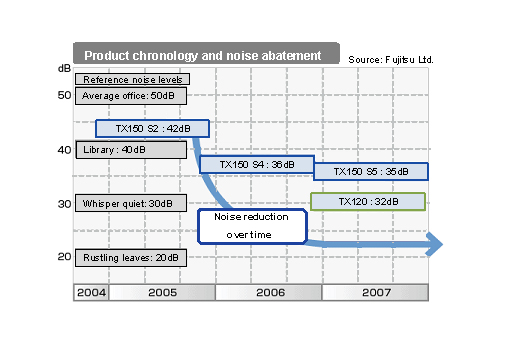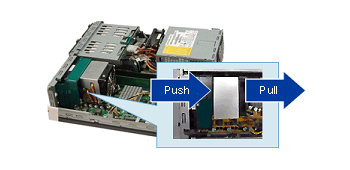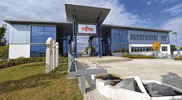-
IT Products and Systems
- Servers
- Storage
- Integrated Systems
- Client Computing Devices
- Peripheral Devices
- made4you
- Personal Computers Lineup
- Switches
- Mobile phones and Tablets
- OS End of Support
- Software
- Network
- Electronic Devices
- Other products
Archived content
NOTE: this is an archived page and the content is likely to be out of date.
PRIMERGY Feature Story - The Quiet Server

The Quiet Server:
Server noise levels best suited to office environments
Ultra-quiet PRIMERGY tower servers have been developed as a direct result of customer demand for low noise office environments. Construction and components have been thoroughly revised to achieve best-in-class library-level noise levels. Their installation ensures a pleasant office environment is maintained.

Fan air flow major noise factor
The primary noise source is the sound of air passing through the cooling fans. Noise reduction is therefore a function of using fewer larger fans that rotate at lower speeds. But given the 1U form factor of rack servers and necessary restrictions on component location this is not easy to achieve. Low noise implementation requires reduced airflow, but how to maintain performance with higher server temperatures and how to improve the thermal efficiency while best handling the cooling of waste heat? PRIMERGY achieves its low noise capability, in a tower format server, by its implementation of cooling technology.
Challenging the limits of air cooling technology
Typical cooling systems for industry standard servers use either an air cooling system based on fans or a cooling system based on liquid coolants. Air cooling has a poorer thermal efficiency than using a liquid coolant but the number of components is less. In addition disadvantages of 1:10,000 chance of coolant leaks, plus additional supervision required for coolant volatility, etc. has led PRIMERGY to implement an industry leading air cooling system to achieve its low noise profile.
Low noise action 1: Removal of CPU Fan
Previously, server CPU heat was transmitted via a heat sink then dispersed via a CPU fan. This enabled the cabinet fan to expel it as exhaust heat from the rear of the server. In TX150 using a heat pipe* made it possible to transmit the heat from the CPU directly to a radiator next to the cabinet exhaust fan. This cooling method, now used in current tower configuration PRIMERGY servers, removes the need for a CPU fan.
* A system based on capillary action whereby narrow tubes within a metal pipe efficiently conducted the heat away from the CPU to a radiator.

Comparison of heat management in different server generations
Low noise action 2: Push-Pull arrangement of Cooling Fans
TX120 is a compact server with a restricted width, making it difficult to reserve the space for a large format fan. This means its small form-factor interferes with this method of noise reduction. Instead two fans are positioned front and back, one pushing and the other pulling the air through the cabinet. They are able to turn at low speed yet guarantee the airflow necessary for cooling. In addition the heat sources, CPU, chipsets, LSI, etc are arranged in a straight line ensuring cooling efficiency along the front to back airflow. In this way reduced noise output is also guaranteed.

Push-Pull Fan System






